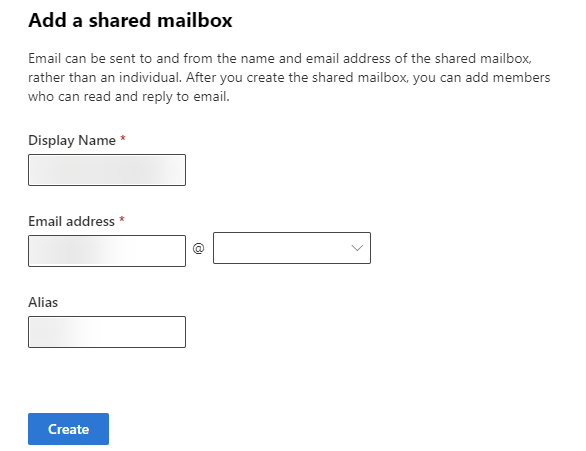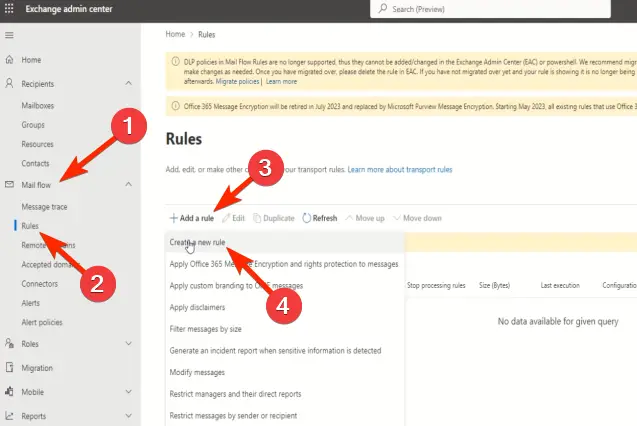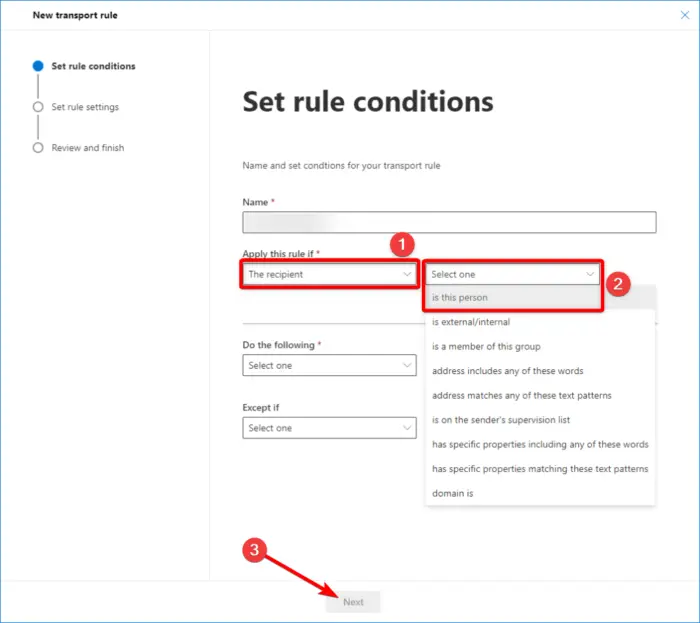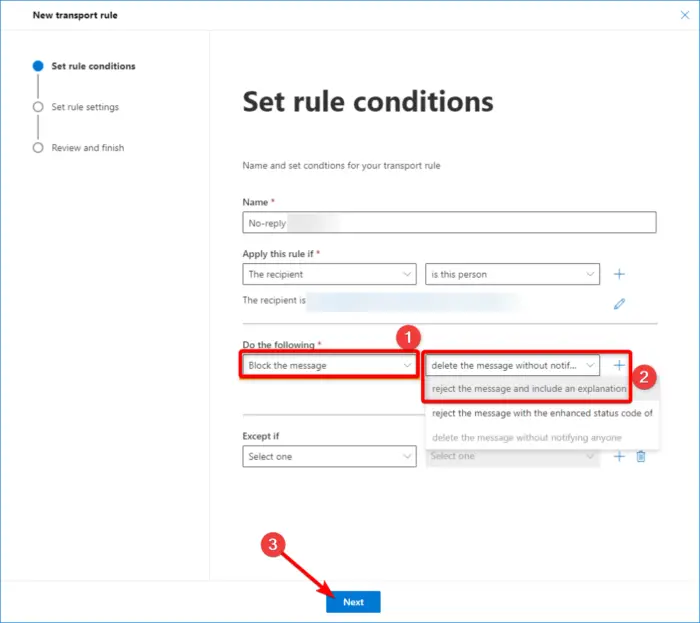 Computer Tutorials
Computer Tutorials
 Computer Knowledge
Computer Knowledge
 How to create a no-reply email address in Exchange Server/Microsoft 365
How to create a no-reply email address in Exchange Server/Microsoft 365
How to create a no-reply email address in Exchange Server/Microsoft 365
This article will introduce you to how to set up a no-reply email address in Exchange Server/Microsoft 365. No-reply email addresses can be a huge productivity boost when you need to automatically send emails without receiving a reply.

Create a no-reply email address in Exchange Server/Microsoft 365
Follow these steps to create a no-reply email address in Exchange Server/Microsoft 365:
Sign in to the Microsoft 365 admin center using your administrator account.
Click the navigation menu and select Exchange under the Admin Center.
The Exchange Admin Center will now open; here, expand the Recipients section, select the mailbox, and click Add Shared Mailbox.
Now, the Add a Shared Mailbox tab will open; fill in all the details and click Create.

The shared mailbox is now successfully created. Now, click Add User to This Mailbox under Next Steps.

Expand the Mail Flow option in the navigation menu again, click Rules and select Create a new rule in the drop-down list.

The Set Rule Conditions tab will open; here, name the new rule, and in the Conditions for applying this rule section, select the recipient and the person.

In the Select Members pane, select the previously created shared mailbox and click Save.

Similarly, in the Set Rule Conditions tab, select Block messages and Reject messages and include an explanation under Do the following and click Next. This will contain a message: "This is a mailbox that cannot be replied to."

The Settings Rules Settings tab will now open; leave it as default and click Next.
Next, review everything in the Review and Complete lists and click Finish.
Finally, enable the created rule from the rules list by flipping the switch to ON.
The above is the detailed content of How to create a no-reply email address in Exchange Server/Microsoft 365. For more information, please follow other related articles on the PHP Chinese website!

Hot AI Tools

Undresser.AI Undress
AI-powered app for creating realistic nude photos

AI Clothes Remover
Online AI tool for removing clothes from photos.

Undress AI Tool
Undress images for free

Clothoff.io
AI clothes remover

AI Hentai Generator
Generate AI Hentai for free.

Hot Article

Hot Tools

Notepad++7.3.1
Easy-to-use and free code editor

SublimeText3 Chinese version
Chinese version, very easy to use

Zend Studio 13.0.1
Powerful PHP integrated development environment

Dreamweaver CS6
Visual web development tools

SublimeText3 Mac version
God-level code editing software (SublimeText3)

Hot Topics
 How to Solve Windows Error Code "INVALID_DATA_ACCESS_TRAP" (0x00000004)
Mar 11, 2025 am 11:26 AM
How to Solve Windows Error Code "INVALID_DATA_ACCESS_TRAP" (0x00000004)
Mar 11, 2025 am 11:26 AM
This article addresses the Windows "INVALID_DATA_ACCESS_TRAP" (0x00000004) error, a critical BSOD. It explores common causes like faulty drivers, hardware malfunctions (RAM, hard drive), software conflicts, overclocking, and malware. Trou
 ENE SYS Maintenance: Tips and Tricks to Keep Your System Running Smoothly
Mar 07, 2025 pm 03:09 PM
ENE SYS Maintenance: Tips and Tricks to Keep Your System Running Smoothly
Mar 07, 2025 pm 03:09 PM
This article provides practical tips for maintaining ENE SYS systems. It addresses common issues like overheating and data corruption, offering preventative measures such as regular cleaning, backups, and software updates. A tailored maintenance s
 How do I edit the Registry? (Warning: Use with caution!)
Mar 21, 2025 pm 07:46 PM
How do I edit the Registry? (Warning: Use with caution!)
Mar 21, 2025 pm 07:46 PM
Article discusses editing Windows Registry, precautions, backup methods, and potential issues from incorrect edits. Main issue: risks of system instability and data loss from improper changes.
 How do I manage services in Windows?
Mar 21, 2025 pm 07:52 PM
How do I manage services in Windows?
Mar 21, 2025 pm 07:52 PM
Article discusses managing Windows services for system health, including starting, stopping, restarting services, and best practices for stability.
 5 Common Mistakes to Avoid During ENE SYS Implementation
Mar 07, 2025 pm 03:11 PM
5 Common Mistakes to Avoid During ENE SYS Implementation
Mar 07, 2025 pm 03:11 PM
This article identifies five common pitfalls in ENE SYS implementation: insufficient planning, inadequate user training, improper data migration, neglecting security, and insufficient testing. These errors can lead to project delays, system failures
 Discover How to Fix Drive Health Warning in Windows Settings
Mar 19, 2025 am 11:10 AM
Discover How to Fix Drive Health Warning in Windows Settings
Mar 19, 2025 am 11:10 AM
What does the drive health warning in Windows Settings mean and what should you do when you receive the disk warning? Read this php.cn tutorial to get step-by-step instructions to cope with this situation.
 which application uses ene.sys
Mar 12, 2025 pm 01:25 PM
which application uses ene.sys
Mar 12, 2025 pm 01:25 PM
This article identifies ene.sys as a Realtek High Definition Audio driver component. It details its function in managing audio hardware, emphasizing its crucial role in audio functionality. The article also guides users on verifying its legitimacy
 why won't driver asio.sys load
Mar 10, 2025 pm 07:58 PM
why won't driver asio.sys load
Mar 10, 2025 pm 07:58 PM
This article addresses the failure of the Windows asio.sys audio driver. Common causes include corrupted system files, hardware/driver incompatibility, software conflicts, registry issues, and malware. Troubleshooting involves SFC scans, driver upda





